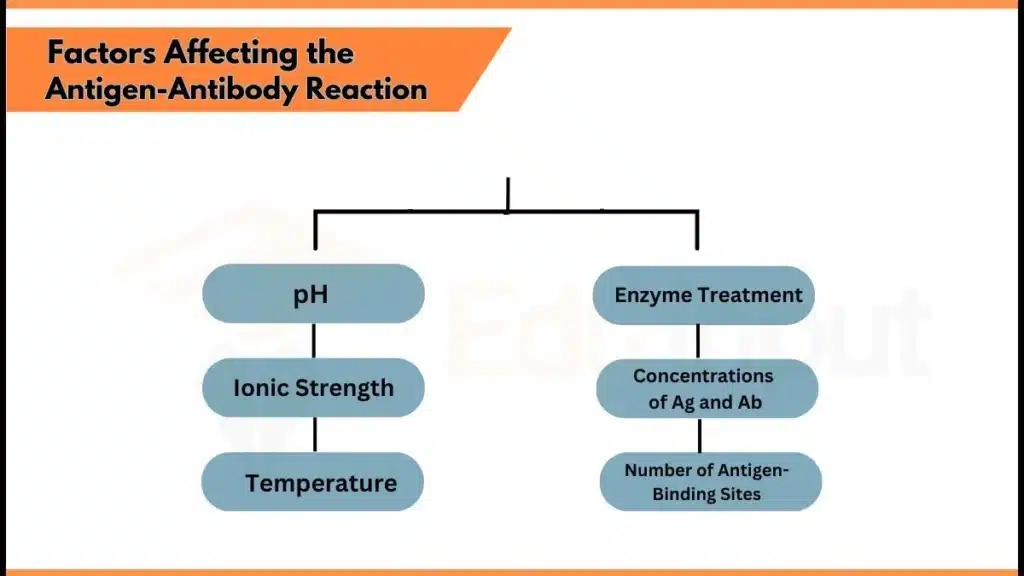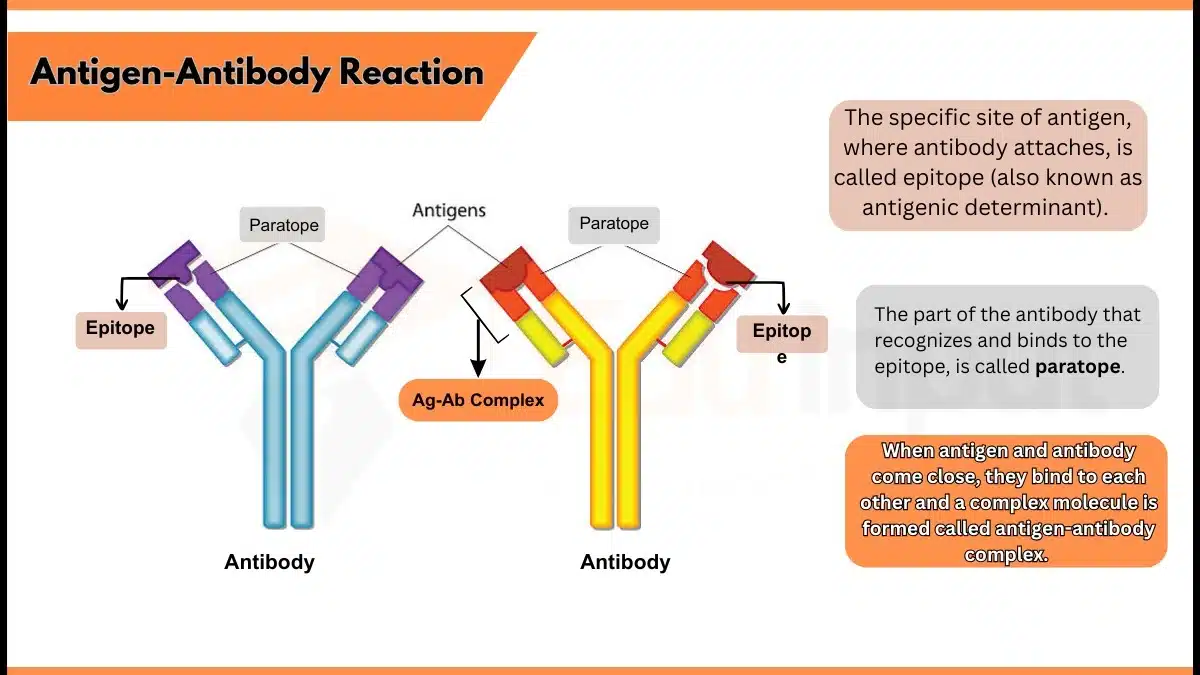Factors Affecting Antigen-Antibody Reaction
Under specific conditions, antigens and antibodies come close and interact with each other in a highly specific manner, known as an antigen-antibody reaction (also called the Ag-Ab reaction). The antigen-antibody reaction depends on several factors that affect its efficiency and specificity.
Key Factors Affecting Antigen-Antibody Reaction
Here are some key factors that play an important role in Ag-Ab reaction:

Temperature
The stability of Ag-Ab reaction depends on the chemical nature of epitopes. Paratopes, and the binding forces involved. For example, hydrogen bonds show stability at low temperatures, while hydrophobic interactions show more stability at higher temperatures.
pH
The optimal pH range for this reaction is 6.5 to 8.5. Extreme pH levels can change the structure of antibodies and disrupt the reaction.
Ionic Strength
Ions play an important role in Ag-Ab reactions, specifically in blood group testing. In a saline solution, the Na+ and Cl– ions surround the immune complex, neutralizing the charges. This makes it difficult for antibodies to attach the antigen, especially when antibodies have weak binding ability.
Enzyme Treatment
Enzymes that break down proteins, (called Proteolytic enzymes) are used to enhance the Ag-Ab reaction. Some examples include papain, ficin, and bromelain.
Concentrations of Antigen and Antibody
Higher concentration of antigen and antibody can improve the reaction by increasing the possibility of binding.
Number of Antigen-Binding Sites
Antibodies with more binding sites contain high chances of interaction. For example, lgM has 10 binding sites due to its pentamer structure, while lgG has only 2 binding sites due to its monomeric structure. This shows that lgM can interact with more antigens compared to lgG.
Structural Arrangement
The antigen and antibody bind to each other like a lock and key does. This lock and key fit helps enhance the interaction between epitope and paratope.
This complex process ensures the immune system effectively identifies and neutralizes harmful agents, protecting the body from infections.




Leave a Reply